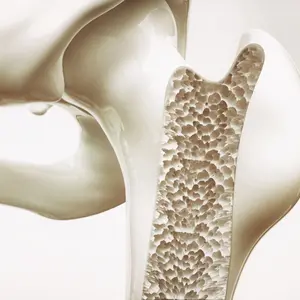

Integrative Health and Wellness

Integrative Health and Wellness
Research Supports Seeing the Chiropractor First
A growing list of studies demonstrates that the services provided by chiropractors are not only clinically effective and safe but also cost-effective.
A 2017 analysis of the 2012 National Health Interview Survey found that back pain and neck pain were the most prevalent problems for which patients sought the services of a chiropractor. A majority of the those treated reported that chiropractic helped a great deal with their health problem and improved their overall health and well-being. The evidence supports the natural, whole-body, nondrug approach of chiropractic for a variety of conditions.
Most Americans have experienced low-back pain. In 2010, the direct costs of back pain in the US were $34 billion and indirect costs from lost wages and productivity were estimated at $200 billion. Low-back pain may be caused by strained muscles and the pain may vary from dull to sharp and may get worse with sitting, standing, walking, or other movement. There are many treatments for low-back pain, including chiropractic therapy, acupuncture, and medication for pain and inflammation.
The American College of Physicians (ACP) developed three recommendations for noninvasive treatment of low-back pain. These include:
- Patients and their practitioner should select a treatment such as superficial heat, massage, acupuncture, or chiropractic therapy rather than use medication for acute (<4 weeks) and subacute (4 to 12 weeks) low-back pain. Medications, if used, should be limited to nonsteroidal anti-inflammatory drugs or skeletal muscle relaxants.
- For chronic low-back pain (> 12 weeks), patients and their practitioner should initially select nonpharmacologic treatment such as exercise, Tai Chi, yoga, and chiropractic therapy, among others.
- For chronic low-back pain that had an inadequate response from the recommended nonpharmacologic approaches, patients and their practitioner should consider nonsteroidal anti-inflammatory drugs first, and then tramadol or duloxetine as a secondary approach. Only when all the other approaches have failed, and the benefits outweigh the risks to the patients and these have been discussed with the patient, should the practitioner consider opioids.
Despite the recommendations of the ACP and similar recommendations by the Centers for Disease Control and Prevention and the American Pain Society, low-back pain is the most common condition for which opioids are prescribed. Opioid use in the US has reached epidemic levels. According to the US Department of Health and Human Services opioid crisis statistics, in 2019 an estimated 10.1 million Americans aged 12 or older misused opioids, and 9.7 million of those individuals were misusing opioids obtained with a prescription. Since 1999 more than 760,000 Americans have died from drug overdoses, with two out of three of those deaths involving an opioid.
But a recent study found that who first treats a patient for low-back pain significantly influenced their opioid use. Patients who were first treated by a chiropractor rather than their primary care physician had 90% decreased odds of both early and long-term opioid use. The study considered insurance claims data for low-back pain across the US from 2008 to 2013.
The evidence supports the natural, whole-body, nondrug approach of chiropractic for a variety of conditions.
A separate study was conducted to evaluate nonpharmacological treatments for low-back pain involving 750 active-duty members of the US military. The study, one of the largest of its kind, compared the effectiveness of usual medical care and chiropractic care for low-back pain. The male and female service members with musculoskeletal-driven low-back pain were provided six weeks of treatment. Half of the group received the usual medical care including self-care, medications, physical therapy, and pain clinic referral. The second half of the group also received chiropractic care including spinal manipulative therapy and additional therapeutic procedures such as rehabilitative exercise, cryotherapy, superficial heat, and other manual therapies.
The study found that the group that received usual medical care plus chiropractic care had a statistically significant improvement in low-back pain intensity and disability as compared to the group that received only the usual medical care. While the results are important for the general population, it is especially important for the US military where low-back pain is one of the most common reasons for personnel to seek medical care and one of the most likely conditions to interrupt combat duty.
Analysis shows that seeing a chiropractor first not only reduced the risks from opioids but also reduces the associated medical costs.
Like low-back pain, neck pain is experienced by most Americans during their lifetime. A study published in the Annals of Internal Medicine compared the effectiveness of three common treatments for neck pain. The study, funded by the National Institute of Health's National Center for Complementary and Alternative Medicine (later renamed the National Center for Complementary and Integrative Health), included 272 adults with nonspecific neck pain for two to twelve weeks. The study took place over a six-year period ending in 2007 with the results published in 2012.
The participants were divided into three groups. One was treated with spinal manipulation therapy by a chiropractor; one was given pain medication (nonsteroidal anti-inflammatory drugs, acetaminophen, and muscle relaxants were prescribed as determined by the physician, and narcotics were prescribed when the patient did not respond to the nonsteroidal anti-inflammatory drugs and acetaminophen); and the third was given home exercises with instructions. Participants were treated for 12 weeks and monitored for 52 weeks.
After one year, approximately 53% of the drug-free groups continued to report at least a 75% reduction in pain.
The group that received spinal manipulation therapy had significantly lower neck pain than those on medication after 8, 12, 26, and 52 weeks. At 12 weeks, about 57% of those receiving chiropractic care and 48% who exercised reported at least a 75% reduction in pain, compared to 33% of those in the medication group. After one year, approximately 53% of the drug-free groups continued to report at least a 75% reduction in pain, compared to just a 38% pain reduction among those who took medication.
Analysis shows that seeing a chiropractor first not only reduces the risks from opioids but also reduces the associated medical costs. In a two-year study by Blue Cross Blue Shield of Tennessee of members with low-back-pain insurance claims, researchers found that when the patient's first treatment was with a chiropractor rather than a medical doctor, they saved 20% to 40% on healthcare costs. The members in the study had equal access to chiropractors and medical doctors and there were no differences in visits allowed or co-pays.
In another study, published in the Journal of Manipulative and Physiological Therapeutics, a comparison was made of utilization and charges generated by medical doctors, doctors of chiropractic, and physical therapists for the treatment of neck pain. The study examined nine years of insurance-claim data for neck pain. The study found that chiropractic care alone or with medical doctor care incurred "appreciably fewer charges" compared to medical doctor care with or without physical therapy when care included referral providers or services.
REFERENCES
Bronfort, G., et al. (2012, January 3). Spinal manipulation, medication, or home exercise with advice for acute and subacute neck pain. Annals of Internal Medicine. https://www.acpjournals.org/doi/10.7326/0003-4819-156-1-201201030-00002?aimhp=
Goertz, C. M., et al. (2018, May 18). Effect of usual medical care plus chiropractic care vs usual medical care alone on pain and disability among US service members with low back pain: A comparative effectiveness clinical trial. JAMA Network Open. https://jamanetwork.com/journals/jamanetworkopen/fullarticle/2680417
Goodman, D. M., et al. (2013, April 24). Low back pain. Journal of the American Medical Association. https://jamanetwork.com/journals/jama/fullarticle/1681414
Hurwitz, E. L., et al. (2016, May). Variations in patterns of utilization and charges for the care of neck pain in North Carolina, 2000 to 2009: A statewide claims’ data analysis. Journal of Manipulative and Physiological Therapeutics. https://www.sciencedirect.com/science/article/abs/pii/S0161475416000543
Kazis, L. E., et al. (2019, September 20). Observational retrospective study of the association of initial healthcare provider for new-onset low back pain with early and long-term opioid use. BMJ Open. https://bmjopen.bmj.com/content/9/9/e028633
Liliedahl, R. L., et al. (2010, November 1). Cost of care for common back pain conditions initiated with chiropractic doctor vs medical doctor/doctor of osteopathy as first physician: Experience of one Tennessee-based general health insurer. Journal of Manipulative and Physiological Therapeutics. https://www.jmptonline.org/article/S0161-4754%2810%2900216-2/fulltext
Qaseem, A., et al. (2017, April 4). Noninvasive treatments for acute, subacute, and chronic low back pain: A clinical practice guideline from the American College of Physicians. Annals of Internal Medicine. https://www.acpjournals.org/doi/10.7326/M16-2367?
US Department of Health and Human Services. (n.d.). Opioid crises statistics. https://www.hhs.gov/opioids/about-the-epidemic/opioid-crisis-statistics/index.html


 By
By







